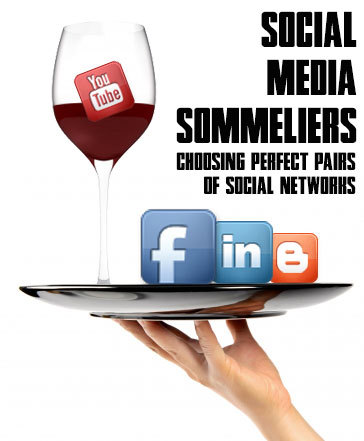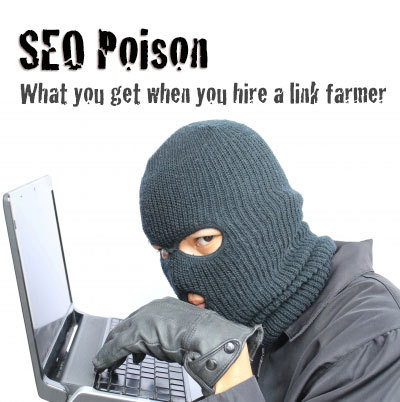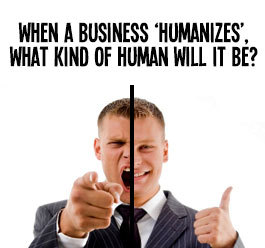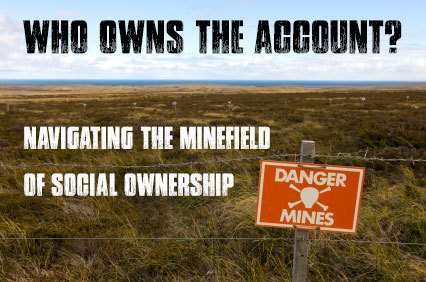
Social Slam 2013 has concluded, and that makes me sad. However, Social Slam 2013 was awesome, and that makes me happy. The content was brilliant, the speakers were tremendous, and the people were the best. Social Slam is without a doubt, a must-attend event for ANYONE working with digital tools, professionally or personally, to connect and communicate.
Scanning back through the countless tweets sent out during the event, there’s so much gold it’s clear that everyone walked away from the event energized and excited to get to work using new techniques and approaches to the digital space. Here is but a handful of the great content that was shared during Social Slam, but for those craving more, simply search for the #soslam hashtag on Twitter and immerse yourself!
 “You’re not just competing with the guy down the street. You’re competing globally.” – @jeffbullas
“You’re not just competing with the guy down the street. You’re competing globally.” – @jeffbullas
My take: Jeff’s own presence at Social Slam after over 40hrs of exhaustive delay-ridden travel time reminds us all that there are no borders in social media. Forget about competing locally, and be awesome worldwide.
 “Social levels the playing field for introverts and extroverts.” – @jeffbullas
“Social levels the playing field for introverts and extroverts.” – @jeffbullas
My take: Your content isn’t judged based on how you act at cocktail parties. It’s judged based on its value. By creating great content, even the most meek and mild of us can become social superstars.
 “Use your social media to tell your whole story: employees, community, environment.” @xanpearson
“Use your social media to tell your whole story: employees, community, environment.” @xanpearson
My take: Your story is not contained within your logo, your mission statement, or your brochure. It’s contained within the actions of every single one of your employees, customers, and partners. Use the power of social to share the entirety of your brand.
 “Blog comments come from emotional reactions to your content. They need to WANT to share their take on your content.” – @dinodogan
“Blog comments come from emotional reactions to your content. They need to WANT to share their take on your content.” – @dinodogan
My take: Dino reminds us that comments don’t appear simply because you wrote something. They appear because something ‘sparked’ inside the reader. An emotional impact triggers the desire to comment. Want comments? Write something that creates that ‘spark’.
 “Community is at the heart of everything we do.” – @gabriellenyc
“Community is at the heart of everything we do.” – @gabriellenyc
My take: Wow! What an INCREDIBLE talk this was. Gabrielle captivated the entire audience with her amazing stories and reminds us all that everything we do connects us to other people. Everyone we meet, shake hands with, share a laugh with, share a moment of sadness or of joy with, inevitably becomes part of our personal community. Social media amplifies this and makes our communities grow stronger, larger, and faster, stretching across the globe.
 “You can’t teach how to blog unless you blog. You can’t teach Twitter if you don’t use Twitter.” – @markwschaefer
“You can’t teach how to blog unless you blog. You can’t teach Twitter if you don’t use Twitter.” – @markwschaefer
My take: In other words, if you want to be a great communicator, then you need to COMMUNICATE. Invest the time in learning the tools, honing your voice, and appreciating your audience. Becoming great in social takes time, and takes practise.
 “Common sense is strangely uncommon most of the time.” @JeffBullas
“Common sense is strangely uncommon most of the time.” @JeffBullas
My take: Think before you do. Read before you post. Choose your words wisely. Jeff’s statement is deceptively simple, yet speaks volumes. Many of those using social do so with very little forethought. Be smart about how you use social media, use care and caution, and pay attention to the perceptions of your audience. It matters.
 “Automation isn’t evil. Use it right & save time. You can’t automate & then bail on your audience.” – @ChrisQueso
“Automation isn’t evil. Use it right & save time. You can’t automate & then bail on your audience.” – @ChrisQueso
My take: Social media is not a ‘set it and forget it’ kind of media. It’s real-time, and is fuelled by interactivity and engagement. Using automation for certain repetitive tasks can be a huge time saver for many of us, but it does not mean that your social networks are now self-sustaining. It needs to have your personal interaction and attention, otherwise you’re just advertising.
 “If all you’re doing is sharing mediocre content, you’re amplifying the suck.” – @jenkaneco
“If all you’re doing is sharing mediocre content, you’re amplifying the suck.” – @jenkaneco
My take: ‘Meh’ content does not get retweeted. It does not get liked. It certainly doesn’t get commented on. Don’t just post for the sake of posting. Post because you’ve got something that is bursting at the seams with awesome. Deliver value, all the time, or your brand will be one big ‘meh’.
 “It’s hard not to like someone once you know their story. – Mr. Rogers” – @ducttape
“It’s hard not to like someone once you know their story. – Mr. Rogers” – @ducttape
My take: Your story is your brand. Who you are, what you’re all about, what you do and why you do it. This is why people like you, this is why people like your company. Don’t seal up your story away from your community. Share it & be proud of it. Your community isn’t just listening to your story, it is an integral part of it.
In addition to being an event overflowing with great content, it was also one of the greatest networking events I’ve ever had the pleasure of attending. Speakers did not run back to their hotel rooms or to the airport after their time on stage had concluded. They became part of the crowd, attending other sessions, and talking with everyone they could find. I was absolutely honoured to personally meet many of the brilliant headliners, had some truly brilliant conversations, and lots of fun hanging out at the pubs!

(So glad I got a chance to hang out with so many brilliant people, like Jeff Bullas & Gabrielle Laine Peters!)
My most profound thanks to Mark Schaefer for making this an incredibly valuable event that will undoubtedly influence attendees to go out to their various corners of the world and utilize the awesome lessons that were learned, and share these lessons with their own communities. I know that I’m already looking forward to Social Slam 2014!


 “I’m of the mind that the Twitter/G+ combo is killer. G+ is more open than FB, and it’s easier to share blog-type posts publicly. Twitter, of course, is the place for garnering those weak-link connections – those people with whom you share an affinity. So Twitter makes the connection, and G+ allows you to share deeper content with those new connections.”
“I’m of the mind that the Twitter/G+ combo is killer. G+ is more open than FB, and it’s easier to share blog-type posts publicly. Twitter, of course, is the place for garnering those weak-link connections – those people with whom you share an affinity. So Twitter makes the connection, and G+ allows you to share deeper content with those new connections.” “The biggest synergy that I see is between Blogging and Twitter. Building a Twitter audience is an effective way to build an audience for your blog. A tweet is like the movie trailer for the movie! They fit like a hand in a glove.
“The biggest synergy that I see is between Blogging and Twitter. Building a Twitter audience is an effective way to build an audience for your blog. A tweet is like the movie trailer for the movie! They fit like a hand in a glove. “I feel that Google+ and Pinterest are a powerful combination. They are both very visual networks with savvy users. Photographers are really killing it on both platforms such as Trey Ratcliff, with 4.5 million Google+ followers and 4.7 million followers on Pinterest, that’s an enviable social media network! Google+ and Pinterest, more than other platforms, really reward their power users with engagement and activity with their content. You can save your Google+ posts on Pinterest boards or find interesting things to post on Google+ from Pinterest. Both platforms support hashtag usage and using keywords is a benefit. Google+ and Pinterest complement each other and add mutual value without distracting or overwhelming the other.
“I feel that Google+ and Pinterest are a powerful combination. They are both very visual networks with savvy users. Photographers are really killing it on both platforms such as Trey Ratcliff, with 4.5 million Google+ followers and 4.7 million followers on Pinterest, that’s an enviable social media network! Google+ and Pinterest, more than other platforms, really reward their power users with engagement and activity with their content. You can save your Google+ posts on Pinterest boards or find interesting things to post on Google+ from Pinterest. Both platforms support hashtag usage and using keywords is a benefit. Google+ and Pinterest complement each other and add mutual value without distracting or overwhelming the other. “LinkedIn and Twitter work beautifully together for me. I use LinkedIn to get comprehensive background info and details about individuals and their histories and companies before connecting with them on Twitter. Or, you may be connected with a person at Company X on Twitter – you can use LinkedIn to find more people at Company X to connect with (including their Twitter backgrounds). I use them in tandem quite a bit but for me – all roads ultimately lead to Twitter – if I make a connection on LinkedIn, I’m always suggesting that we continue the conversation on Twitter.
“LinkedIn and Twitter work beautifully together for me. I use LinkedIn to get comprehensive background info and details about individuals and their histories and companies before connecting with them on Twitter. Or, you may be connected with a person at Company X on Twitter – you can use LinkedIn to find more people at Company X to connect with (including their Twitter backgrounds). I use them in tandem quite a bit but for me – all roads ultimately lead to Twitter – if I make a connection on LinkedIn, I’m always suggesting that we continue the conversation on Twitter. “I often see how well Facebook and YouTube can work well together. Facebook being the largest social network and YouTube being the second largest search engine makes it easy to share a powerful, compelling, funny, or moving video with a large network of people with one click.
“I often see how well Facebook and YouTube can work well together. Facebook being the largest social network and YouTube being the second largest search engine makes it easy to share a powerful, compelling, funny, or moving video with a large network of people with one click. “Twitter I find great as a tool to build new relationships and to start conversations that continue on other platforms. It also allows you to connect with your network and keep those important relationships alive in just 140 characters when in today’s busy business world you don’t have time for much more.
“Twitter I find great as a tool to build new relationships and to start conversations that continue on other platforms. It also allows you to connect with your network and keep those important relationships alive in just 140 characters when in today’s busy business world you don’t have time for much more. “Google+ and YouTube are natural partners and work together for the brand’s benefit on many levels. Google+ Hangouts upload directly to a YouTube channel for one-click cross-network sharing. Further, with Google Authorship, the combo packs a great SEO/SEM punch. There’s little-to-no expertise required to create conversational videos with customers, vendors, the media or others and best of all, the platforms are free!
“Google+ and YouTube are natural partners and work together for the brand’s benefit on many levels. Google+ Hangouts upload directly to a YouTube channel for one-click cross-network sharing. Further, with Google Authorship, the combo packs a great SEO/SEM punch. There’s little-to-no expertise required to create conversational videos with customers, vendors, the media or others and best of all, the platforms are free!
 Monday night saw one of the greatest examples of brilliant branding combining with TV product placement and social interaction. The iconic Canadian brand
Monday night saw one of the greatest examples of brilliant branding combining with TV product placement and social interaction. The iconic Canadian brand 






 What kind of human did social media turn their business in to? The answer is pretty clear. I have no doubt that the culture at that restaurant was like that long before the advent of social media. Behind closed doors, conversations like that wouldn’t have gone any further than the few employees ranting about it at the end of the day. Now? Their company culture becomes visible to all, and it’s not pretty.
What kind of human did social media turn their business in to? The answer is pretty clear. I have no doubt that the culture at that restaurant was like that long before the advent of social media. Behind closed doors, conversations like that wouldn’t have gone any further than the few employees ranting about it at the end of the day. Now? Their company culture becomes visible to all, and it’s not pretty.






